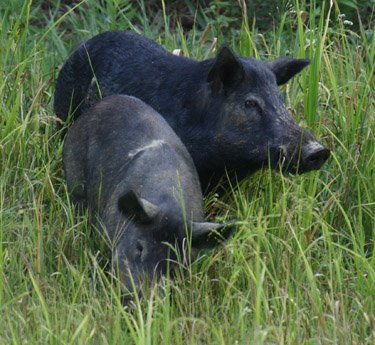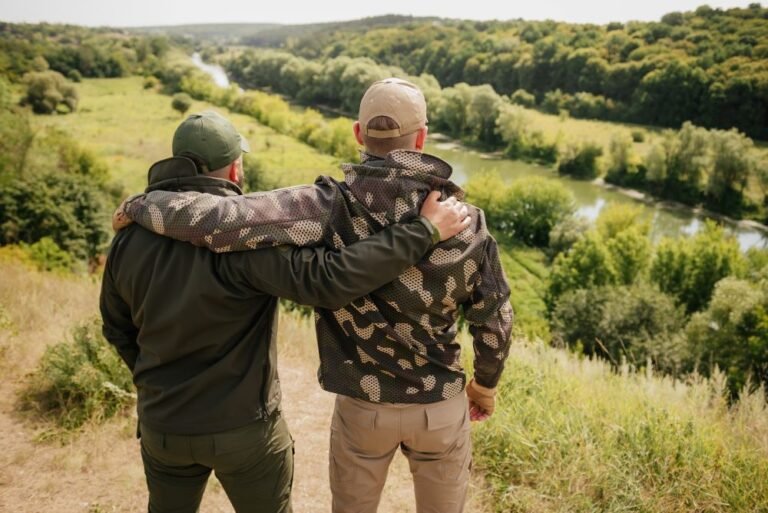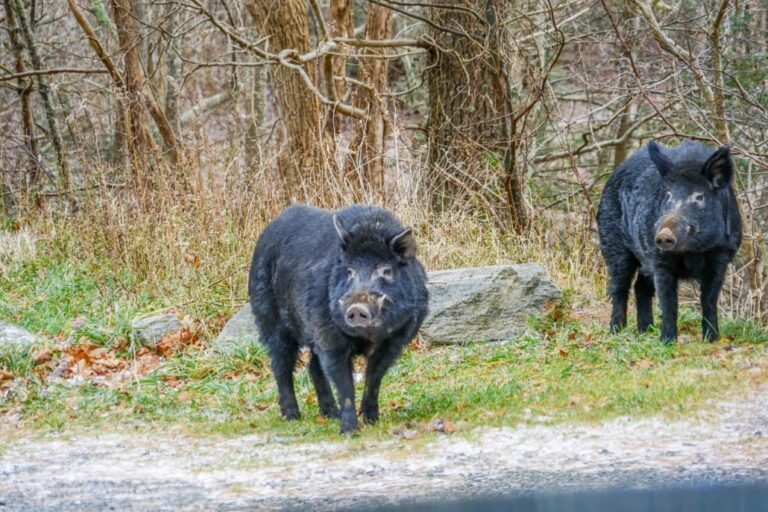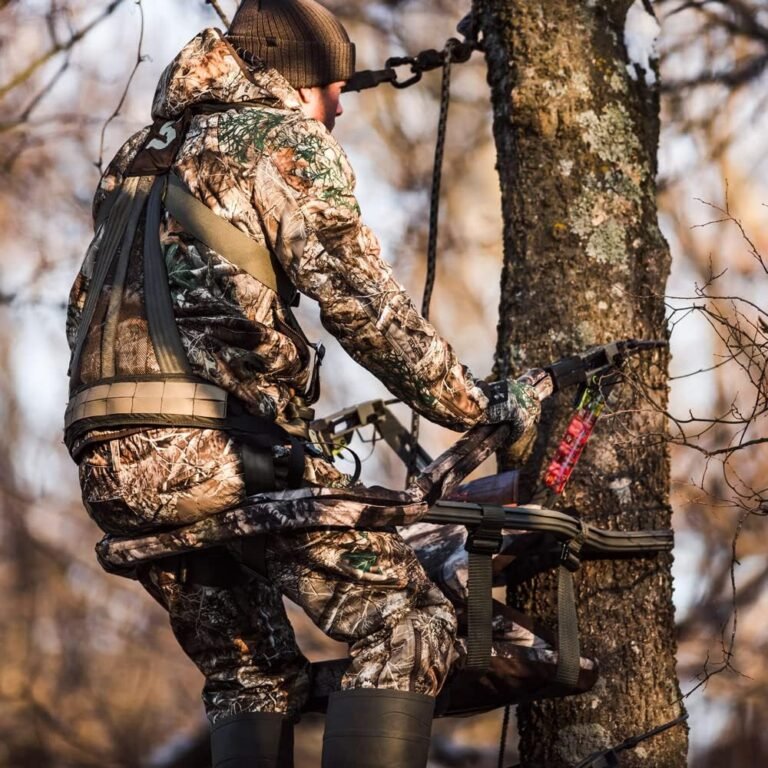Alabama Hog Hunting: The Call of the Wild Boar
Alabama hog hunting, an activity steeped in tradition and natural beauty, has long been hailed as a coveted destination for hunting enthusiasts. Its rich hunting heritage dates back generations, where hunters from all walks of life have ventured into its sprawling forests and abundant wilderness in pursuit of game. Among the various thrilling activities that capture the hearts of Alabama’s sporting community, hog hunting is an exhilarating experience.
Brief Overview of Alabama’s Rich Hunting Tradition
With a history deeply intertwined with the outdoors, Alabama has fostered a remarkable hunting tradition that spans centuries. This southern state boasts diverse wildlife-filled landscapes ranging from vast pine forests to fertile wetlands teeming with game species.
From deer to turkey, waterfowl to small game, Alabama offers ample opportunities for hunters to immerse themselves in nature while honing their skills. Such traditions have been handed down through generations, forging bonds between families and friends who share a common passion for exploring the great outdoors.
Hog Hunting as a Popular and Thrilling Activity in the State
Among the many hunting opportunities available in Alabama, hog hunting has emerged as one of the most sought-after adventures for intrepid sportsmen and sportswomen. Wild hogs have become prevalent throughout the state due to their prolific breeding rate and adaptability to various habitats.
These invasive creatures pose ecological threats and give hunters an adrenaline-pumping pursuit, unlike any other game animal. Hog hunting offers an unparalleled thrill that combines strategy, skill, and raw excitement.
The sheer challenge of tracking down these intelligent creatures makes each hunt unique – requiring hunters to tap into their instincts while navigating dense underbrush or traversing rugged terrains where hogs often seek refuge. Moreover, hog hunting allows hunters to engage in conservation efforts, as removing feral hogs helps mitigate their negative impact on native wildlife and ecosystems.
Whether you are a seasoned hunter or a novice looking to embark on your first hunting experience, exploring the realm of Alabama hog hunting promises an unforgettable adventure. Join us as we delve into the intricacies of this thrilling pursuit, uncovering the most fruitful hunting hotspots, discussing regulations and techniques, and sharing valuable tips to enhance your success in harvesting these elusive creatures.
Description of Alabama Hogs
Wild hogs, also commonly known as feral pigs or boars, roam the landscapes of Alabama with an imposing presence. These formidable creatures possess a robust build and a remarkable adaptability that enables them to thrive in various environments.
Adult hogs typically weigh between 100 and 300 pounds, although some individuals can reach weights exceeding 400 pounds. Their stout bodies are covered in coarse, bristly hair, usually brown or black in coloration, providing them with a rugged appearance that reflects their wild nature.
Regarding behavior, Alabama hogs are highly intelligent and possess keen senses that aid their survival. They exhibit a social structure characterized by groups known as sounders, consisting of several females and their young, along with a dominant male.
Although predominantly nocturnal animals, they may also be active during twilight hours or when food sources are abundant during certain times of the year. Hogs are omnivorous opportunists who feed on a wide range of vegetation and animal matter, including roots, tubers, nuts, insects, small mammals, and even carrion.
Explanation of Feral Hogs’ Impact on the Ecosystem
The proliferation of feral hogs in Alabama has rapidly transformed from an ecological concern to a significant problem affecting wildlife populations and agricultural lands. Originally introduced by European settlers for hunting purposes in the late 1500s, these once-domesticated pigs quickly adapted to their new surroundings and established thriving populations throughout the state.
Their rapid reproduction rates and minimal natural predators have led to exponential population growth within relatively short time frames. As they wander vast territories searching for food sources, feral hogs cause substantial damage to crops such as soybeans and peanuts while uprooting large areas through their vigorous rooting behavior.
Moreover, the destructive foraging habits exhibited by these pigs can adversely impact native flora and fauna, disrupting the delicate balance of ecosystems. They outcompete native wildlife for resources and have been found to prey on the eggs of ground-nesting birds and reptiles.
Additionally, their rooting activities can lead to soil erosion, altering waterways and negatively affecting aquatic habitats. The escalating presence of feral hogs in Alabama necessitates a vigilant management approach, focusing on controlling populations through hunting initiatives while minimizing the ecological and economic consequences caused by these invasive creatures.
Hunting Regulations and Permits
Overview of Hunting Seasons for Hogs in Alabama
When planning an exhilarating hog hunting expedition in the heart of Alabama, it is essential to familiarize oneself with the hunting seasons and regulations set forth by the state. The Alabama Department of Conservation and Natural Resources (ADCNR) carefully manages hog populations to ensure sustainable hunting practices. While specific seasons may vary slightly yearly, the main hog hunting season typically spans October through February.
This timeframe coincides with cooler temperatures when hogs are more active, maximizing the chances of a successful hunt. Hunters must stay updated on any changes or modifications made by ADCNR regarding hunting seasons and bag limits, as they are subject to periodic adjustments based on population dynamics.
Explanation of Necessary Permits and Licenses Required for Hog Hunting in Alabama
Before embarking on an unforgettable journey through Alabama’s wilderness to pursue wild hogs, hunters must acquire the appropriate permits and licenses mandated by ADCNR. Individuals over 16 must possess a valid hunting license issued by the state. An annual Wildlife Management Area (WMA) license or a WMA daily permit might be necessary, depending on the chosen hunting location within these designated areas.
Hunters should consult ADCNR’s website or contact their local conservation office for detailed information regarding licenses and permits specific to hog hunting in Alabama. By adhering to these regulations and obtaining all necessary permits, hunters can enjoy the thrill of pursuing wild hogs while contributing to responsible wildlife management efforts within this great southern state known for its fantastic outdoor recreational opportunities.
Hunting Techniques and Equipment
Unleashing the Hunt: Mastering the Techniques of Alabama Hog Hunting
In the vast hunting landscapes of Alabama, hog enthusiasts have developed a repertoire of effective techniques to outsmart their wily and resilient targets. Among these approaches, spot-and-stalk, stand hunting, and dog hunting reign supreme.
Spot-and-stalk is a thrilling method that involves spotting hogs from a distance and then stealthily closing in for the shot. This technique requires keen observation skills and a deep understanding of hog behavior, allowing hunters to strategize their approach while keeping wind direction and terrain features in mind.
Stand hunting is another popular tactic implemented in Alabama hog hunting expeditions. Hunters carefully select an advantageous position overlooking areas frequented by hogs, such as feeding or water sources.
By remaining motionless and concealed within brush or elevated stands, hunters patiently wait for their quarry to come into view before aiming. Dog hunting presents an exhilarating option for those seeking an adrenaline-fueled experience with highly trained canines.
Specially trained dogs are unleashed to track down hogs by scent, skillfully herding them towards waiting hunters. This technique relies on teamwork between dogs and handlers to flush out hogs from dense cover or thickets.
Arming Yourself: Essential Equipment for an Alabama Hog Hunting Adventure
Equipping yourself with appropriate gear is paramount to embark on a successful hog hunt in the heart of Alabama’s wild lands. Starting with firearms, many hunters favor powerful rifles chambered in calibers such as .308 Winchester or .30-06 Springfield for their versatility and knockdown power against these formidable creatures.
Shotguns loaded with rifled slugs are also effective at short ranges or maneuvering through dense brush. Ammunition selection is crucial in ensuring humane kills while maintaining hunter safety.
Bullets or slugs designed for deep penetration and expansion are preferred, providing maximum stopping power upon impact. It’s essential to choose ammunition that matches the ballistics of your chosen firearm.
Stealth is key when stalking hogs, making camouflage clothing an indispensable asset. Opt for patterns that blend into Alabama’s diverse landscapes, such as woodland, marshland, or field designs.
Investing in scent control products like sprays or clothing treatments can minimize human odor detection by these keen-nosed creatures. Implementing hog calls can be a game-changer during hunts.
These specialized devices mimic sounds made by hogs to attract or communicate with one another. Choosing calls with adjustable settings allows hunters to imitate various vocalizations like distress calls or mating sounds, enticing curious hogs within shooting range.
Equipped with the appropriate techniques and gear in your arsenal, you are now prepared to embark on an unforgettable hog-hunting adventure through Alabama’s untamed wilderness. Always adhere to state regulations and prioritize safety while reveling in this thrilling pursuit of nature’s most elusive prey.
Best Hunting Locations in Alabama
Alabama Hog Hunting Hotspots
Regarding hog hunting in Alabama, several regions are prime locations for successful hunts. One such hotspot is the expansive Black Belt region, renowned for its fertile soils and abundant wildlife.
The Black Belt offers a diverse mix of agricultural fields, dense forests, and swampy areas, providing an ideal habitat for hogs. Another notable area is the southernmost part of the state, particularly along the Alabama-Florida border.
With its vast public lands, dense pine forests, and wetlands, this region has become a haven for feral and wild hogs. Additionally, the sprawling river bottoms along major waterways, such as the Tombigbee River, offer excellent opportunities for hog hunting due to the lush vegetation and water sources that attract these elusive creatures.
Terrain Preferences and Behavior
Understanding the types of terrain hogs prefer is crucial to maximizing your chances of a successful hunt. Hogs possess an adaptive nature that allows them to thrive in various environments. In Alabama, they are commonly found in swamps and low-lying areas with dense undergrowth where they can seek refuge during daylight hours.
These areas provide ample cover and food sources, such as acorns or roots that hogs eagerly root up from the ground. Furthermore, open agricultural fields adjacent to wooded areas are also frequented by hogs as they offer both feeding opportunities and quick escape routes into nearby cover.
By identifying these preferred terrains through scouting or local knowledge, hunters can strategically position themselves for a higher probability of encountering these elusive creatures. Alabama offers hunters numerous hog-hunting hotspots where populations thrive due to diverse terrains providing abundant food sources and cover for these adaptable creatures.
The Black Belt region, with its mix of fields and woodlands, or the southern part of the state near the Alabama-Florida border with its vast public lands and river bottoms, are just a few examples. Understanding hog behavior and their terrain preferences further enhances the chances of a fruitful hunt.


Tracking and Scouting Hogs
Unraveling the Trails: Decoding Hog Signatures
One crucial aspect of successful hog hunting in Alabama is the ability to track and decipher the signs these elusive creatures leave. When searching for hog populations, hunters should be peeled for distinctive markings, such as rooting areas or wallows.
Rooting areas are patches of disturbed soil where hogs have used their snouts to dig up vegetation for food, creating a telltale sign of their presence. Upturned dirt and vegetation littered on the ground can easily identify these spots.
Similarly, wallows are muddy depressions created by hogs rolling around in water or mud to cool off and ward off insects. Observing these signs allows hunters to identify potential feeding and resting areas where hogs might gather.
Scouting Secrets: Discovering Active Feeding Areas and Travel Routes
Experienced hunters know the importance of scouting for active feeding areas and travel routes frequented by these clever creatures to enhance their chances of encountering hogs during a hunt. One effective strategy is to search for preferred food sources such as acorn-dense oak groves or agricultural fields where hogs find easy pickings. Identifying fresh tracks, droppings, or recently disturbed soil near potential food sources can indicate recent hog activity.
Additionally, scouting travel routes like game trails leading from bedding areas to feeding spots provides valuable insight into hogs’ movement patterns. By strategically placing motion-activated trail cameras along these routes, hunters can capture images that reveal peak hog activity periods, helping them plan their hunts more effectively.
Tracking and scouting techniques are indispensable tools for any Alabama hog hunter seeking success in this thrilling endeavor. Unveiling the hidden world of wild hogs through careful observation of rooting areas and wallows allows hunters to gain valuable insights into their whereabouts.
Furthermore, scouting active feeding areas and travel routes provides crucial information to plan strategic hunting approaches. By mastering these skills, hunters can increase their chances of encountering these wily creatures in the Alabama wilderness and make the most of their hog-hunting adventures in this vibrant region renowned for its rich hunting traditions.
Hog Hunting Tips
Guidance on Shot Placement for Ethical Kills
Regarding hog hunting in Alabama, ethical and humane kills should always be the top priority. Proper shot placement is crucial to ensure a quick and clean takedown. Aim for vital areas such as the heart or lungs, which increase the chance of an immediate kill.
When hogs stand broadside, aim behind the shoulder, just above the front leg. This area offers a good target for vital organs.
However, if hogs are quartering towards or away from you, adjust your aim slightly forward or backward to hit those vitals effectively. Remember that taking precise shots from a stable shooting position is essential for accuracy and minimizing unnecessary suffering.
Suggestions on Effective Strategies with Minimized Risks
While hog hunting in Alabama can be exhilarating, it’s important to prioritize safety and minimize potential risks. Here are some valuable suggestions when planning your hunt: 1. Scout Thoroughly: Spend time scouting potential hunting locations beforehand to study hog patterns and determine the best ambush spots.
2. Practice Stealth: Hogs have keen senses of smell and hearing; stealth is key! Move slowly and silently through the terrain while using available cover to remain undetected.
3. Consider Wind Direction: Closely to wind patterns, as hogs rely heavily on their sense of smell. Always approach from downwind so that your scent does not alert them.
4. Choose Proper Firepower: Select appropriate firearms and ammunition suitable for hog hunting in Alabama based on their size, weight, and penetration capabilities. 5. Use Calls Strategically: Learn how to use various hog calls effectively to attract or lure them closer within shooting range.
6. Work with Experienced Guides: If you’re new to hog hunting or unfamiliar with specific Alabama hog hunting hotspots, consider partnering with experienced guides who can offer valuable insights, enhance safety, and increase your chances of success. Following these tips and strategies will enhance your chances of a successful hog hunt in Alabama ens, ensure the utmost respect for the animals, and maintain a safe hunting experience.
Hog Meat Utilization
Delicious Bounty of the Wild
Regarding hog meat utilization, Alabama hunters are in for a mouthwatering treat. Enthusiasts have long celebrated the quality and taste of wild hog meat and for a good reason. Thanks to their varied diet and active lifestyle, Alabama hogs develop richly flavored, lean meat that is a culinary delight.
With a taste profile reminiscent of pork but with a distinct earthy undertone, wild hog meat offers an adventurous gastronomic experience. The possibilities for savoring this bounty are endless, from succulent roasts to savory sausages and delectable bacon.
Conclusion
Alabama provides an exceptional hunting experience for those seeking the adrenaline rush and primal excitement of hog hunting. With its diverse landscapes, dedicated hunters can immerse themselves in the heartland of Alabama hog-hunting hotspots, where adventure awaits at every turn. From tracking these elusive creatures through dense forests to perfecting shot placement techniques, there is no shortage of challenges for passionate hunters.
Moreover, the rewards extend beyond the thrill of the hunt as wild hog meat proves to be a true culinary treasure, a testament to nature’s bountiful offerings. So venture into this wilderness with respect for nature’s balance and appreciation for all Alabama has to offer in its illustrious world of hunting adventures.






